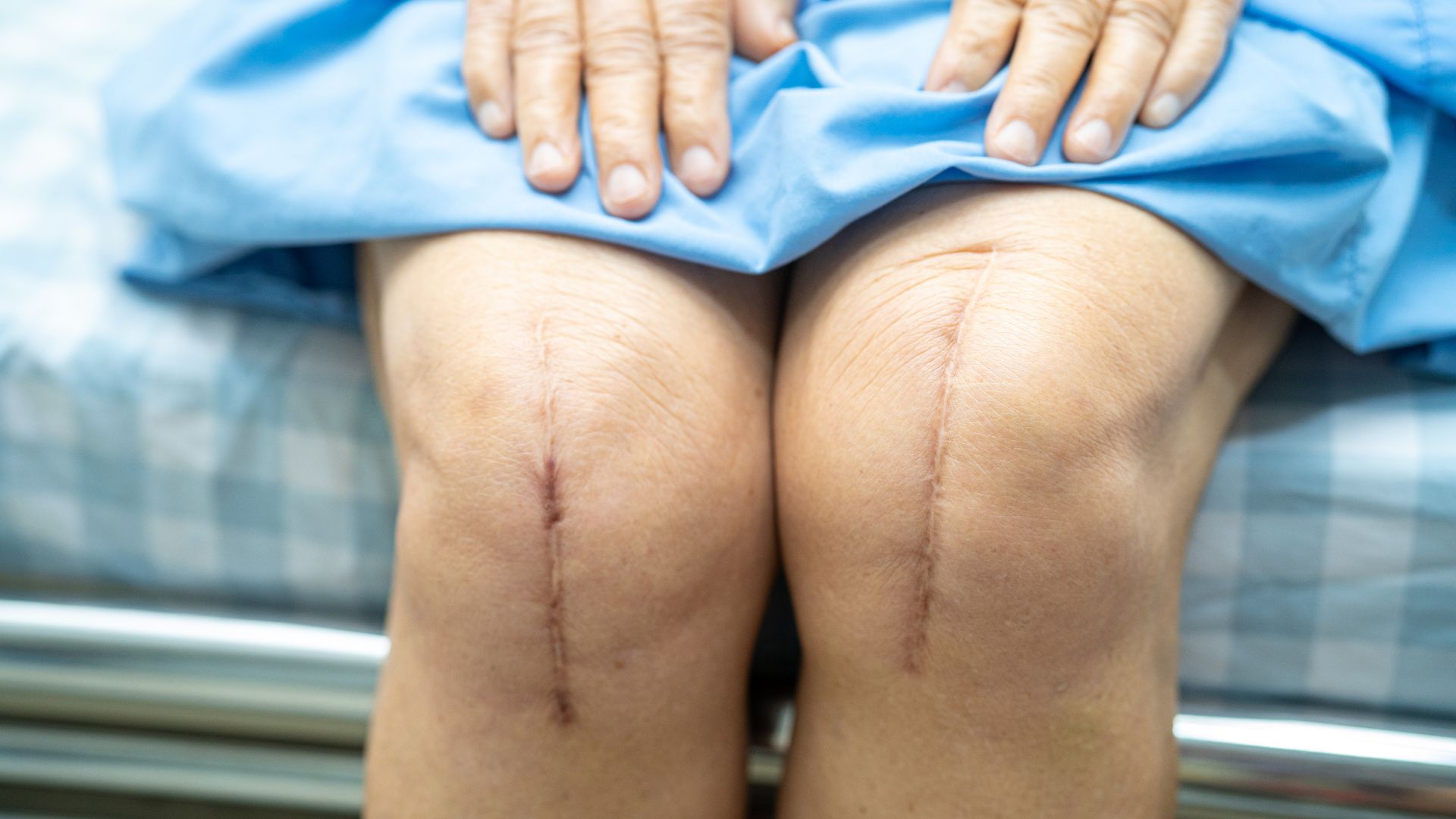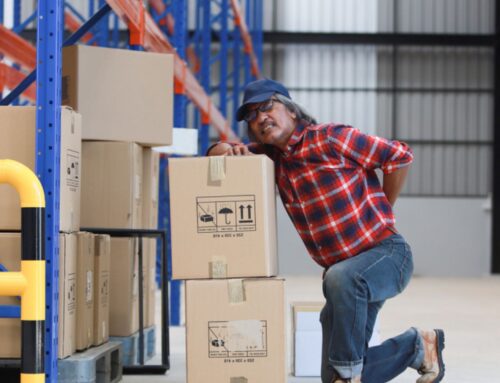Recovery after orthopedic surgery can vary from individual to individual. While most of us recover at approximately the same rate, every injury and each individual is unique. In this article, we will look at common types of orthopedic surgery, the recovery process, including the stages of healing, and best management after surgery.
Table of Contents:
- What is orthopedic surgery?
- Common types of orthopedic surgery
- Four stages of healing after surgery
- Scar tissue management
- Long term healing
- Restrictions from the doctor
- Signs of infection
- Pain levels and progress
- Physiotherapy treatment
- Conclusion
What is Orthopedic Surgery?
Orthopedic surgery involves conditions affecting the musculoskeletal system including bone, joint, muscles and nerves. Orthopedic surgeons use both surgical and nonsurgical means to treat musculoskeletal trauma, spine diseases, sports injuries, degenerative diseases, infections, tumors, and congenital disorders.
Common Types of Orthopedic Surgery
Surgeries for specific injuries fall under two different categories depending on the urgency of the medical procedure and other available approaches:
Elective surgery
This is a type of surgery that is planned in advance. Common elective surgeries are total hip replacements and total knee replacements. A person receiving this type of surgery has met with a surgeon to have a discussion of quality of life, integrity of the joint, and health status to decide if they are an appropriate fit for surgery. Once decided, they are given a date to undergo the surgery. Often this process is completed over several months.
Emergency or unplanned surgery
This surgery happens when it is a medical emergency and the surgeon has decided that a conservative or non-operative approach is not a favorable outcome. This can happen with an injury when someone falls and fractures the bones in their hip or wrist (FOOSH injury), or in a motor vehicle accident (MVA).
When an injury happens, more than one area of the body can be injured, whether it is a bone fracture, a torn muscle, nerve damage, brain injury or severe bruising (hematoma). In this case, a surgery can happen immediately upon arriving at a hospital, or within a few days.
Four Stages of Healing After Surgery
When in recovery after orthopedic surgery, there is an abundance of activity happening in the body. It is helpful to understand the healing process the bodily tissues are undergoing.
There are 4 main stages of healing after surgery:[i]
- Hemostasis
Hemostasis is a process that helps to prevent and stop bleeding. This process starts right away, and lasts for the first few hours. Initially, there is a provisional wound matrix that is created to fill in the gap between the incision, and it allows migration of chemical messengers into the area (cytokines, leukocytes, endothelial cells, and growth factors).
Constriction of the vessels occur in the area to stop any excessive bleeding, allow a clot to form structure in the wound, and also white blood cells are released to clean the wound. Soon after, dilation of the vessels occur to allow early inflammation and create new blood vessels. This may be observed on the patient as redness and swelling in the area.
- Inflammation
Inflammation is a process by which the immune system recognizes and removes harmful and foreign substances or stimuli. This process lasts for two to five days. White blood cells (neutrophils and monocytes), are sent into the healing area to clean any bacteria or unhealthy tissue.
Growth factors and cytokines are also released into the area. Cytokines are cells that are important for controlling immune cells and blood cells. This phase is usually the most painful, and around the incision is swelling, heat, and redness.
- Proliferation
This stage is when the wound is rebuilt with new tissue. This stage occurs during days 4-21. The body is now making granulation tissue, which replaces the previous wound matrix with tissue that will make the scar stronger and better able to respond to tensile forces.
In the granulation tissue are loosely organized bundles of collagen fibers (along with fibroblasts, capillaries, and macrophages). Epithelial cells are made in more abundance, which help with wound closure, and they help with creating blood vessels (ie. angiogenesis) to encourage increased circulation during the healing process.
- Maturation
This stage is when the final tissue has been laid in the area. This stage occurs 21 days – 1 year. The collagen fibers (collagen III) that are loosely organized, are now being replaced by stronger collagen (collagen I) that is better organized in narrow small bundles.
The new collagen allows a greater response to tensile forces, compared to the initial collagen used. Myofibroblasts form to help contract the scar tissue, thereby making the scar smaller. At this time, there is a reduction in circulation which in turn causes a reduction of chemical activity in the area. During this time, there is likely less pain, and the scar area will start feeling tighter.
Scar Tissue Management
The collagen described in the previous section is often what is referred to as scar tissue. Scar tissue can stick to underlying tissue, including bones and muscle, which can limit movement.
Exercise helps during the healing phases in order to show the collagen fibers in which tensile direction to be laid down. Scar massage can also be used to help in the various stages of scar tissue management. These techniques allow the collagen and surgery site to grow in a strong pattern, as it becomes permanent tissue. Since the collagen laid down in the proliferative phase is not very strong, the body will likely get rid of what it does not need (ie. scar tissue breaking up).
Long Term Healing
It takes six months to a year to return to a normal level of strength following a surgery. As mentioned in the stages of healing, the maturation phase of healing can take up to one year to complete. In order for a muscle to gain strength, there are neuromuscular adaptations, and there is an increase in muscle cross sectional area. These changes take time and can take eight to 12 weeks to occur.[ii]
There are other stresses on the body which can affect the healing length of time. Prior to an elective surgery, there was likely severe pain and weakness in the surrounding muscles, causing the body to operate at a lower functional level.
Then to add to the difficulty, a surgery is done, which makes the body work even harder. With an emergency surgery, the surgery site is trying to heal, and at the same time surrounding tissues or other body parts that were injured, are also trying to heal.
Factors that can affect healing are:[iii]
- Smoking and Alcohol
- Diabetes
- Nutrition
- Infection
- Immunocompromised conditions
- Chemotherapy
- Steroid medication
Restrictions from the Doctor
A doctor may give restrictions for certain movements or weight bearing for clients after their surgery. Physiotherapy will follow the restrictions in order to encourage appropriate healing as the surgical site goes through its phases of healing. Some restrictions relate to how quickly a person should progress to harder exercises.
To maintain the integrity of the surgery, the surgeon may ask in the first few weeks to work on gentle exercises that cause minimal effort from the surgical area (these can be passive or assisted types of movements).
Other restrictions are related to weight bearing on the joint and bones. A person may be asked to not put any weight on their leg or arm for several weeks until the bone is healed. In this case, a person will be asked to walk with crutches, or a walker, or to wear a sling on their arm.
Signs of Infection
In order to heal properly it is important to avoid infection, or seek treatment immediately when there are signs of infection in a surgical incision. It is important to talk to the doctor when there is an infection, and whether treatment with antibiotics is necessary.
Signs include:[iv]
- Spreading redness on the skin
- Increased pain, swelling and heat in the area
- Pus coming out of the incision
- Foul smell coming out of the incision
- Fever
Ways to avoid infection:
- Do not soak in a bath or go swimming until all the scabs are gone
- Keep the incision clean and dry
- Do not pick at the scab, allow it come off on its own
- Monitor the incision daily, use a hand held mirror if the incision is in a difficult area to see, ask a family member to help you check the incision
- If signs of an infection are present, seek medical attention immediately
Pain Levels and Progress
A common motto that is related to exercise is “no pain no gain.” This is not always the case! It is important that the body is challenged to make progress, however pushing through too much pain is not helpful for recovery. There is a difference between “pain” and “a muscle working hard.”
That being said, when recovering from a surgery, there is likely to be some pain related to the tissues healing. In the Pain Adaptation Model, pain can inhibit or turn off a muscle from activating, and can excite the opposite muscle.[v] Therefore, too much pain can be counter-effective to the goals of recovery.
Neurophysiology has taught us that when we are in pain, pain chemicals and inflammation are released in the painful area, and the nociceptors (pain sensing receptors) in our nerves recognize the chemicals. The nociceptors then send the message to the brain that there is pain present.
In some cases of prolonged pain, central sensitization can occur. Central sensitization can cause a lower threshold to pain (allodynia), a painful stimulus to feel more painful than usual (hyperalgesia), and spreading of the pain across the surrounding tissues (secondary hyperalgesia).[vi]
The goal is to keep the pain levels to a minimum in order to allow a person to move easier.
Physiotherapy Treatment
In the hospital, early mobilization occurs to improve a person’s recovery after surgery, and reduce post-operative complications.[vii] Once discharged home, following up with a physiotherapist is important in continuing recovery and optimizing function.
A physiotherapist will help provide guidance and education on movement and exercise frequency and techniques. They will discuss how many weeks of treatment should be completed and set short term and long term goals. Physiotherapists will also provide pain management techniques such as acupuncture and manual therapy and provide education on self-management pain strategies such as ice and elevation.
It is important to be able to perform a consistent amount of exercises each day. If a person is very sore from doing many exercises or activities on the previous day, it is possible that they “overdid it”. Exercises are completed in a gradual progression in order to reduce pain levels, and allow gradual strengthening of muscles.
Recovery After Orthopedic Surgery Conclusion
Understanding the healing process of the body, and reflecting on which stage of recovery you are in can help you to be more patient with the process. After orthopedic surgery, participating in a consistent exercise program that is gradually progressed over time is a great first step. It is also important to follow the guidelines for any restrictions given from the orthopedic surgeon and the physiotherapist. Remember, there are factors that can affect healing time, and in the case of infections, there are signs and symptoms that will alert a patient of its presence.
An individual who has the knowledge and understanding of the course of recovery after orthopedic surgery can have a very successful result and can gradually return back to their normal daily activities, hobbies, and work.
References
[i] Reinke, J., & Sorg, H. (2012). Wound repair and regeneration. European Surgical Research, 49(1), 35–43. https://doi.org/10.1159/000339613
[ii] Hughes DC, Ellefsen S, Baar K. Adaptations to Endurance and Strength Training. Cold Spring Harb Perspect Med. 2018 Jun 1;8(6):a029769. doi: 10.1101/cshperspect.a029769. PMID: 28490537; PMCID: PMC5983157.
[iii] Guo S, Dipietro LA. Factors affecting wound healing. J Dent Res. 2010 Mar;89(3):219-29. doi: 10.1177/0022034509359125. Epub 2010 Feb 5. PMID: 20139336; PMCID: PMC2903966.
[iv] Healy B, Freedman A. Infections. BMJ. 2006 Apr 8;332(7545):838-41. doi: 10.1136/bmj.332.7545.838. PMID: 16601046; PMCID: PMC1432149.
[v] Graven-Nielsen T, Svensson P, Arendt-Nielsen L. Effects of experimental muscle pain on muscle activity and co-ordination during static and dynamic motor function. Electroencephalogr Clin Neurophysiol. 1997 Apr;105(2):156-64. doi: 10.1016/s0924-980x(96)96554-6. PMID: 9152211.
[vi] Woolf CJ. Central sensitization: implications for the diagnosis and treatment of pain. Pain. 2011 Mar;152(3 Suppl):S2-S15. doi: 10.1016/j.pain.2010.09.030. Epub 2010 Oct 18. PMID: 20961685; PMCID: PMC3268359.
[vii] Tazreean, R., Nelson, G., & Twomey, R. (2022). Early mobilization in enhanced recovery after surgery pathways: current evidence and recent advancements. Journal of Comparative Effectiveness Research, 11(2), 121–129. https://doi.org/10.2217/cer-2021-0258
Written by

















